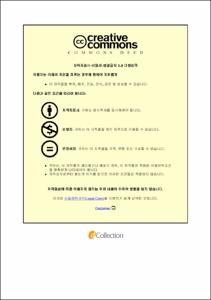Joint association of a polygenic risk score and PM10 exposure for asthma and BHR in COCOA study
- Abstract
- Background: Each genetic factor and particulate matter with a diameter of less than 10 µm (PM10) exposure contribute to the development of asthma and bronchial hyperresponsiveness (BHR), but joint effect between them is unknown.
Objective: The aims of this study were to assess the joint effect of polygenic risk score (PRS) and PM10 exposure on the development of asthma and BHR and identify the critical period of PM10 exposure for asthma and BHR.
Methods: We used the integral data composed to genetic data, confounding factors and questionnaires associated with asthma and BHR outcome of 643 children in the Cohort for Childhood Origin of Asthma and allergic diseases (COCOA) study. Asthma was defined as children 1) who has asthma symptom during last 12 months, 2) who has a physician’s diagnosis of asthma during life combined with asthma symptom during last 12 months at the age 6 to 10 years. BHR was defined as PC20 ≤8 mg/mL by using provocholine provocation test. polygenic risk score (PRS) was calculated using five single-nucleotide polymorphisms, including IL-13 (rs20541), NRF2 (rs6726395), GSTP1 (rs1695), GSDMB (rs7216389) and TSLP (rs3806933). Multiple logistic regression analysis was performed. To identify the critical window for PM10 exposure, Bayesian distributed lag interaction model (BDLIM) was performed.
Results: The weighted PRS showed a significant association with increased asthma symptom (aOR 1.973, 95% CI 1.016-3.832), current asthma (aOR 5.369, 95% CI 1.793-16.078) and BHR (aOR 1.711, 95% CI 1.093-2.680). The risk of BHR increased in both PM10 during entire trimester of pregnancy (aOR 2.145, 95% CI 1.338-3.439) and PM10 during second trimester of pregnancy (aOR 1.822, 95% CI 1.114-2.980). Children with high PRS/high PM10 during entire trimester of pregnancy increased the risk of current asthma (aOR 6.501, 95% CI 1.361-31.044). Children with high PRS/high PM10 during first and second trimester of pregnancy increased the risk of current asthma (aOR 6.756, 95% CI 1.422-32.093; aOR 3.822, 95% CI 1.118-13.062, respectively). Children with high PRS/high PM10 during second trimester of pregnancy increased the risk of BHR (aOR, 2.603; 95% CI, 1.311-5.166). By BDLIM, critical window of PM10 exposure for BHR was 5-11 weeks of gestation in total participants and 6-8 weeks of gestation in males and 6-7 weeks of gestation in females. Depending on the PRS, high PM10 exposure during 6-8 weeks of gestation was significantly associated with BHR in low PRS group. In addition, stratifying by PRS and sex, high PM10 exposure during 13-14 weeks of gestation was significantly associated with BHR in female with low PRS.
Conclusions: Our study found that higher PRS and higher PM10 exposure during pregnancy increased the risk of current asthma and BHR. In addition, prenatal exposure of PM10, especially during first and second trimesters, has an effect on the development of current asthma and BHR, modified by PRS and sex. The critical window of PM10 exposure for BHR was 5-11 weeks of gestation. |연구목적: 유전적 요인과 PM10은 천식 및 기관지과민성 발생에 영향을 미치지만, 이것들의 공동효과에 관한 연구는 부족하다. 따라서 본 연구에서는 천식 및 기관지과민성에 대한 다유전자위험점수와 PM10의 공동효과를 평가하고, PM10이 질환 위험에 가장 영향을 미치는 중요한 시기를 찾고자 하였다.
대상 및 방법: 소아 호흡기·알레르기질환 장기추적 코호트 (COCOA)에 등록된 영유아 중 연구 조건을 만족하는 총 643명의 영유아가 본 연구에 포함되었다. 6세부터 10세까지 1) 천식 증상; 최근 12개월 동안 천식 증상이 있는 아동, 2) 현증 천식; 최근 12개월 동안 천식 증상이 있고, 태어나서 한 번이라도 의사에게 천식 진단을 받은 아동을 천식으로 정의하였으며, 프로보콜린 자극 검사의 PC20값이 8 mg/mL 이하인 경우를 기관지과민성으로 정의하였다. 다유전자위험점수는 IL-13 (rs20541), NRF2 (rs6726395), GSTP1 (rs1695), GSDMB (rs7216389) and TSLP (rs3806933) 로 계산하였다. 다중 로지스틱 회귀분석이 질환발생 위험 확인에 사용되었으며, Bayesian distributed lag interaction model (BDLIM)을 사용하여 PM10 노출에 대한 중요한 시기를 확인하였다.
결과: 가중 PRS는 천식 증상(aOR 1.973, 95% CI 1.016-3.832), 현증 천식(aOR 5.369, 95% CI 1.793-16.078) 및 기관지과민성(OR 1.711, 95% CI 1.093-2.806)에 유의한 연관성을 보였다. 기관지과민성은 임신 중 PM10 노출이 높을 때(aOR 2.145, 95% CI 1.338-3.439)와 임신 중기 PM10 노출이 높을 때(aOR 1.822, 95% CI 1.114-2.980) 각각 위험이 증가하였다. 다유전자위험점수가 높고, 산모가 임신 중 PM10 노출이 높으면 영유아의 현증천식 위험을 높이는 것으로 나타났다(aOR 6.501, 95% CI 1.361-31.044). 다유전자위험점수가 높고, 산모가 임신 초기 및 중기 때 PM10 노출이 높으면 영유아의 현증천식 위험이 증가하였으며(각각 aOR 6.756, 95% CI 1.422-32.093; aOR 3.822, 95% CI 1.118-13.062), 다유전자위험점수가 높고, 산모가 임신 중기 때 PM10 노출이 높으면 영유아의 기관지과민성 위험이 증가하였다(aOR, 2.603, 95% CI, 1.311-5.166). BDLIM 결과에 따르면, PM10 노출이 질환에 영향을 미치는 중요한 시기는 임신 5-11주였고, 남아의 경우 임신 6-8주, 여아의 경우 임신 6-7주로 나타났다. 다유전자위험점수가 낮은 군에서 PM10 노출이 기관지과민성에 영향을 미치는 중요한 시기는 임신 6-8주로 나타났고, 성별로 층화하여 분석하였을 때, 여아에서는 13-14주가 중요한 시기로 나타났다.
결론: 높은 다유전자위험점수와 임신 동안의 높은 PM10 노출이 현증천식과 기관지과민성 위험을 증가시켰다. 특히, 임신 초기와 중기의 높은 PM10 노출이 다유전자위험점수와 성별을 고려하였을 때에도 현증천식과 기관지과민성에 영향을 미쳤고, 기관지과민성에 대한 중요한 시기는 5-11주였다. 일반적으로 임신 초기는 태아의 발달에 중요한 시기이며, 이 시기 동안의 PM10 노출이 천식과 기관지과민성에 영향을 미치는 것을 확인할 수 있었다.
- Issued Date
- 2022
- Awarded Date
- 2022-02
- Type
- dissertation
- Keyword
- asthma; BHR; polygenic risk score; prenatal; PM10; critical period
- Alternative Author(s)
- Si Hyeon Lee
- Affiliation
- 울산대학교
- Department
- 일반대학원 의과학과 의과학전공
- Advisor
- 홍수종
- Degree
- Doctor
- Publisher
- 울산대학교 일반대학원 의과학과 의과학전공
- Language
- eng
- Rights
- 울산대학교 논문은 저작권에 의해 보호 받습니다.
- Appears in Collections:
- Medical Science > 2. Theses (Ph.D)
- 파일 목록
-
-
Download
 200000605364.pdf
기타 데이터 / 637.62 kB / Adobe PDF
200000605364.pdf
기타 데이터 / 637.62 kB / Adobe PDF
-
Items in Repository are protected by copyright, with all rights reserved, unless otherwise indicated.